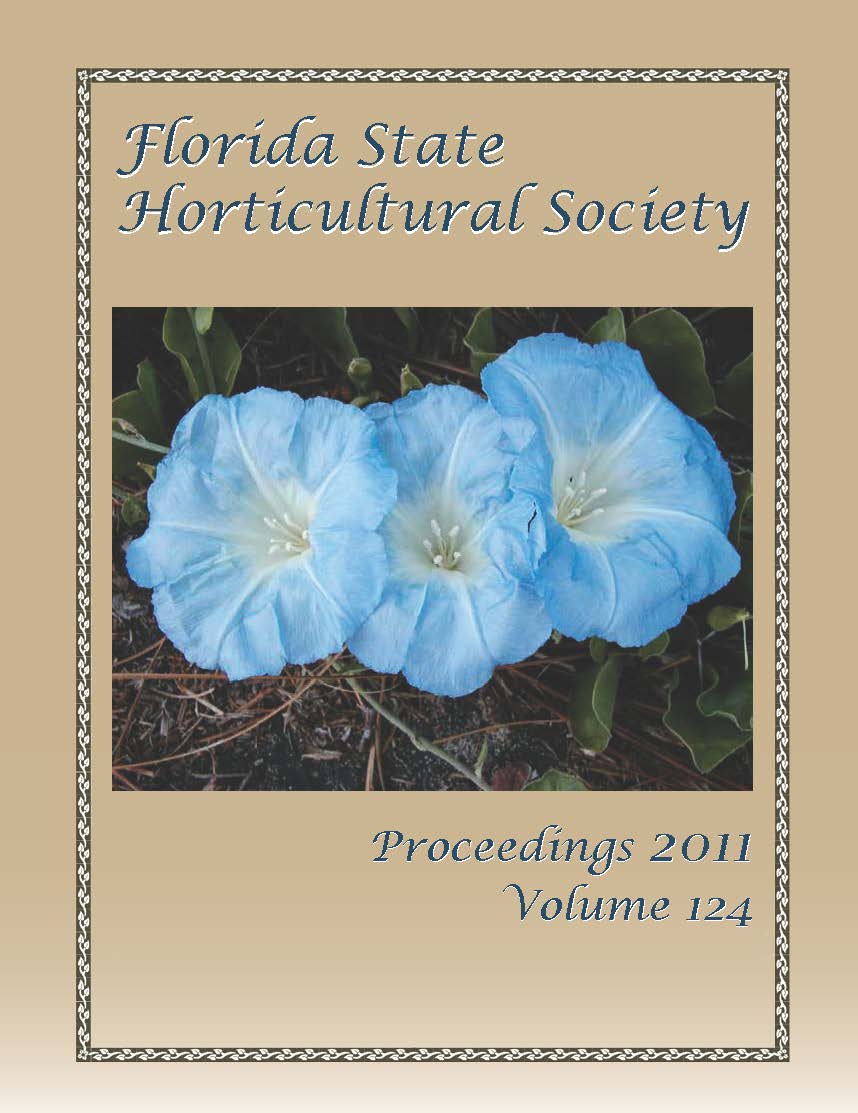Published 2011-12-01
Keywords
- citrus greening,
- citrus nursery seed trees,
- risk of pathogen introduction
Abstract
Huanglongbing (HLB) was first discovered in Florida in 2005. In response, Florida citrus nurseries began treating rootstock seed trees located outdoors with insecticide applications to reduce risk of psyllid transmission of ‘Candidatus Liberibacter asiaticus’ (Las), the putative causal agent. In 2008, a survey identified two ‘Carrizo’ citrange trees with symptoms of HLB. To assess the potential for seed transmission from HLB-affected seed source trees, assays of seedlings derived from seed extracted from symptomatic fruit were begun in 2006. From 2006 to 2008, 1557 seedlings germinated from ‘Pineapple’ sweet orange seeds from trees in Collier County were assayed by quantitative polymerase chain reaction (qPCR) using 16S rRNA gene primers. Of these seedlings, a single plant was positive for (Las+), although additional tests were negative. In 2009, no Las+ plants were detected among 332 ‘Murcott’ tangor seedlings from trees in Hendry County. From nurseries in 2008, one Las+ seedling was detected in 290 seedlings from fruit located on symptomatic branches of two ‘Carrizo’ citrange trees, but its Las+ status was not confirmed after repeated testing. In 2009, a single Las+ result was obtained for one of 100 Cleopatra mandarin seedlings, whereas no Las+ seedlings were detected for 125 seedlings from seeds from two trees of ‘Swingle’ citrumelo, 649 seedlings from four trees of ‘Kuharske’ citrange, or 100 seedlings from one tree of ‘Shekwasha’ mandarin. Despite the occasional Las+ qPCR tests, no plants developed HLB symptoms. The most probable explanation for these results is transient transmission of Lasfrom seed obtained from HLB-affected trees with no subsequent disease establishment.

